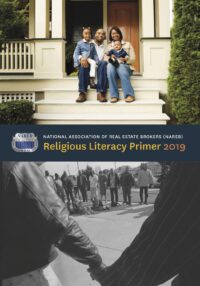Religious competence, not unlike cultural competence, is the level of knowledge-based skills of individuals or organizations required to provide effective engagement to individuals of a particular religious group. Religious competence is not about being politically correct or providing special privileges to one group to the exclusion of others; rather, it is about customizing your engagement strategy to the needs of each group, meeting their needs in the way they want them met, and with the underlying mission of building trust and long-term, sustainable partnerships.
COMMUNICATION
- Use appropriate forms of address.
- Many lay community leaders also have titles such as Doctor, Brother, Sister or simply Mr./Ms.
- Ask others for their preferred name/title if unsure—better to err on the side of caution and start with formal titles.
- Some religious traditions have greetings used by members; these may be appreciated but not required for those outside the group.
- Use the best medium to reach your audience rather than the option that is easiest for you. While some cultures place importance on written information, others rely heavily on social networks and find in-person communication to be more trustworthy.
- Use non-print mediums (TV, radio, social media, in-person meetings) to reach those who predominately consume and interact with media in these formats.
- Be cognizant of socioeconomic levels—comfort levels with borrowing money and experience with filing paperwork will vary.
- Pay attention to your own nonverbal communications and those of others, including eye contact and body language.
MEETING LOGISTICS
- Choose meeting locations thoughtfully, considering neutral spaces and those that are ADA-accessible.
- In interfaith or inter-denomination settings, consider rotating meeting spaces to ensure fairness and to avoid any appearance of bias toward one group, including any cultural factors, especially religion, neighborhood or socioeconomic group.
- Different cultures view time intervals and time durations differently.
- Remember many community and religious leaders are bi-vocational. Avoid meeting scheduling during the daytime when possible or rotate meeting schedules. Respect Sabbath days and religious holy days.
- Check calendars online for any potential religious holidays or conflicts.
- If hosting a meeting where food is provided, ensure that food meets all dietary restrictions and is appropriate to the target audience. Ask the faith leader what their community enjoys eating. If it is an interfaith meeting, ensure kosher, halal and vegetarian options are available, as appropriate.
HOW TO DRESS
- Wear modest clothing when entering houses of worship. Generally, this means clothing that covers shoulders, chest, knees and elbows.
- Some items of jewelry such as bracelets, necklaces or beads worn by both males and females may have religious significance and should not be touched or removed without the wearer’s permission.
GENDER, PHYSICAL INTERACTION AND PERSONAL SPACE
- Touch can be seen as a friendly gesture or as invasive.
- Religious norms may mean someone moves closer to you or farther away.
- Avoid initiating physical contact when meeting or greeting those from religious traditions that differ from your own, especially those of the opposite gender. Initiating common gestures, such as shaking hands or hugging/embracing,
may not be welcomed or met with the expected reaction. - Be prepared with an alternative gesture, such as placing the right hand on one’s own heart, when being introduced.
- When in doubt, ask before making assumptions, wait for a leader to initiate or ask first.
This section has been adapted with permission from materials created by the National Disaster Interfaiths Network and the USC Center for Religion and Civic Culture.
